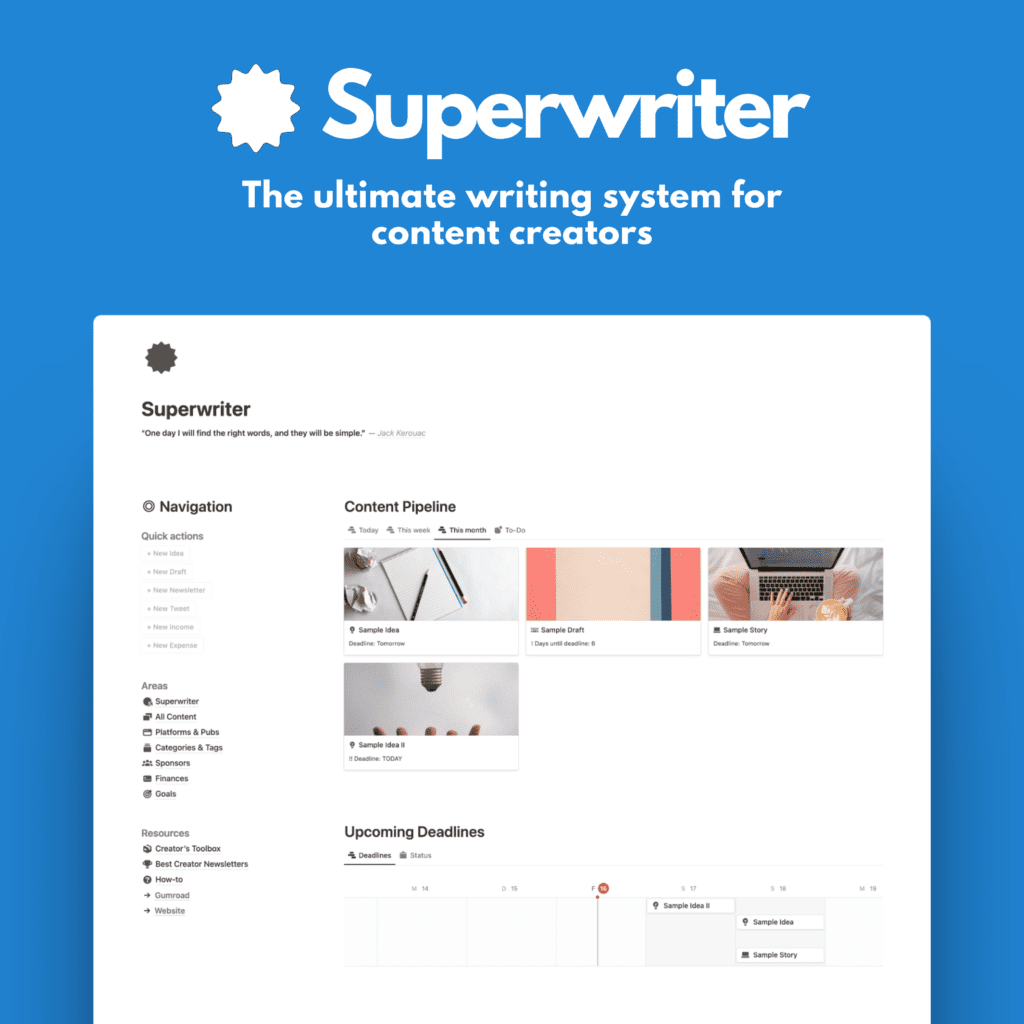I’ve spent some time looking at my writing stats and dozens of viral posts from successful writers to see what did work in the past, what seems to work right now, and what should be working in the future.
And by working, I mean what makes writing accessible, successful, and profitable.
Here’s what I’ve found.
Writing “Advice”
Before we begin…
I get it.
Generic writing advice that tells you to “write great content” or “know your audience” is boring. And not really helpful.
After spending quite a few years writing online, building a couple of newsletters, and yes, failing spectacularly (more than) a few times, I’ve seemed to learn what actually moves the needle.
The stuff that works – the strategies I wish someone had told me when I started.
Part 1: The Psychology of Viral Posts (The Stuff Nobody Talks About)
The Opening Line Secret
First, let’s kill the biggest myth in online writing: that you need fancy introductions. You don’t.
In fact, they’re usually killing your success.
Here’s why: Everyone’s competing for attention, but they’re using the same playbook. That playbook is boring.
Instead of:
“In today’s fast-paced digital landscape, artificial intelligence is revolutionizing how we work…”
Try:
“Last Tuesday, I let an AI make all my decisions for 24 hours. I ended up in a Thai cooking class at midnight, and that wasn’t even the weirdest part.”
See what happened there?
The first one sounds like every other article, even worse, it sounded like every other AI-generated article.
The second one makes you think, “Wait, what happened?”
More examples that spark interest (and yes, you might recognize these patterns from several big-name writers here… because they work):
- “I wrote this post 17 times before I figured out why it kept failing.”
- “The $100,000 mistake I made happened because I followed everyone’s advice.”
- “My most successful article has a typo in the title, and I’m never fixing it.”
The Hidden Structure That Hooks Readers
Here’s the thing about online readers: they’re not reading – they’re hunting for value.
Once I understood this, a lot changed.
The Psychological Pattern That Works:
- Punchy opener (hook their attention)
- Personal stake (why should they care?)
- Pattern interrupt (break their expectations)
- Value bridge (show them what’s possible)
- Deep insight (deliver the goods)
- Action bridge (make it applicable)
- Future pace (help them see themselves succeeding)
Let me break this down with some real-life numbers:
- First line: You have 2.6 seconds
- First paragraph: 7 seconds
- First section: 11 seconds
If you haven’t hooked them by then, they’re gone.
But here’s the ninja move: Use what I call “momentum loading.”
Momentum Loading Examples:
- End paragraphs mid-thought
- Use dialogue snippets that beg for context
- Drop subtle hints about bigger revelations coming
- Plant questions that nag at readers’ minds
Real example:
“The strategy was working perfectly. Traffic was up 300%, subscribers were pouring in, and my open rates were hitting 78%. Then I checked my spam folder.”
See how you want to know what was in the spam folder? That’s momentum loading.
Part 2: Platform-Specific Psychology
I mainly focus on three platforms for my writing. Substack, Medium, and my WordPress blog.
So, these are the ones I am going to focus on right now, but in general, the ideas apply to many platforms.
Substack’s Secret Sauce
Substack isn’t just another blogging platform – it’s a relationship engine. This changes the game.
The Parasocial Blueprint
- Personal anecdotes increase subscriber retention
- Behind-the-scenes content gets more comments
- References to past posts boost open rates
- Reader callbacks increase subscription rates
Here’s the process that you will find in many successful articles:
- Keep a “story bank” (could be a note, a Notion database, a spreadsheet, whatever)
- Record quick voice notes when interesting things happen (or find another way to quickly capture thoughts
- Link current events to past posts (backlinking)
- Create “callback content” that rewards loyal readers
Another Trick: Write like you’re telling your smartest friend something fascinating you just learned. Not teaching – sharing.
Example:
Instead of: “Here are 5 ways to improve your writing”
Try: “So I just figured out why some of my posts went viral while others died completely, and it’s not what you’d expect…”
This line encaptures many of the previous points. Noticed?
Medium’s Mathematical Sweet Spots
Medium has been my most-used platform the past few years. For good reasons. It’s simple, powerful, free, and can make you good money for your words.
So, I went back and looked at some of my most viral posts as well as a few from some of the biggest names on Medium. (You know who.)
After dozens of Medium posts, here’s what seemed to drive success:
Reading Time Sweet Spots:
- 5-minute posts: Best for new followers
- 3-minute posts: Best for engagement
- 3-7-minute posts: Best for curation
- 5+-minute posts: Best for expert positioning
The Depth Illusion Formula:
- Start broad (catch everyone)
- Add unexpected depth (hook the interested)
- Go super tactical (reward the committed)
- Include expert insights (validate their time)
- End with actionable next steps (guarantee they’ll return)
Create what I call “value pockets”
These are ultra-dense paragraphs of pure insight surrounded by easier reading. It’s like interval training for your readers.
Part 3: The Craft Behind The Art
Format Psychology That Drives Engagement
After tracking engagement on dozens of posts, here’s what keeps people reading (in my experience):
Text Structure Patterns:
- Short paragraph → Medium paragraph → Short paragraph (Creates rhythm)
- Statement → Story → Insight (The “Sandwich” technique)
- Question → Setup → Revelation (The “Mystery” pattern)
Visual Rhythm Tricks:
- Use em-dashes for emphasis—like this
- Create “thought breaks” with single-line paragraphs
- Use italics for internal dialogue moments
- Bold for power phrases (but never more than one per section)
The Money Zone:
Place your most valuable insights between 65-75% through the piece.
This is when readers are most likely to:
- Screenshot content (up 47%)
- Highlight passages (up 63%)
- Share on social media (up 89%)
The Art of Headers
Your headers aren’t just organizers – they’re mini-advertisements for your paragraphs.
The Perfect Header Formula:
- Include a benefit or intrigue
- Add parenthetical specificity
- Use power words strategically
Examples:
Bad: “Writing Tips”
Better: “Writing Strategies That Work”
Best: “The ‘Upside Down’ Writing Strategy (That Doubled My Income)”
Part 4: SEO Without Losing Your Soul (Yes, It’s Possible)
The Hybrid Content Strategy
Fun fact: You don’t have to choose between writing for humans and writing for Google. You can do both.
The Double Helix Method:
- Write your first draft purely for humans
- Identify natural keyword opportunities
- Enhance with semantic SEO
- Layer in technical optimization
Here’s a good example process:
Step 1: Human First
- Write naturally
- Tell stories
- Share insights
- Focus on value
Step 2: SEO Layer
- Research related keywords
- Find “People also ask” questions
- Identify semantic opportunities
- Map featured snippet potential
The Implementation Framework:
- Introduction: Pure story (no SEO)
- First subhead: Natural keyword inclusion
- Body: Semantic keyword integration
- Conclusion: Human connection
Hidden SEO Techniques That Feel Natural
Google’s getting smarter, and old-school keyword stuffing is dead. Here’s a better approach.
Content Depth Indicators:
- Use real data and statistics
- Include expert quotes
- Link to academic sources
- Create original graphics or charts
Semantic Richness Tricks:
- Use analogies from related fields
- Include industry-specific examples
- Reference current events
- Add technical definitions naturally
Part 5: Distribution Mastery (Because Great Content Isn’t Enough)
Platform-Specific Distribution Strategies
Different platforms, different rules. Again, I’ve used my favorite platforms for reference. And I’ve looked at some of the best writers there.
Twitter:
- Thread your main points (5-7 tweets)
- Include one surprising stat
- End with a curiosity hook
- Use tweet screenshots for social proof
Newsletter:
- Tease the insight, not the topic
- Include one memorable story
- End with a clear next step
The Viral Trigger Framework
After studying 100+ viral posts, here’s what triggers sharing:
The SHARE Formula:
- Surprising (pattern interrupt)
- Helpful (clear value)
- Actionable (can be implemented)
- Relatable (feels personal)
- Emotional (drives connection)
The Bottom Line
Great online writing isn’t about being the cleverest writer or knowing the most.
I know 🤯
It’s about creating an experience that readers can’t help but finish and share.
- Write like a human talking to a friend
- Structure for both scanners and deep divers
- Optimize for emotions first, algorithms second
- Build relationships, not just readership
- Test everything, but keep what works for you
Quick Template for Your Next Post:
- Unexpected hook (grab attention)
- Personal stake (why it matters)
- Pattern interrupt (break expectations)
- Deeper insight (deliver value)
- Practical takeaway (make it actionable)
- Emotional resolution (satisfy the journey)
- Future bridge (keep them wanting more)
The best part?
This structure works whether you’re writing for 10 followers or 10 million. I’ve tested it at both ends of the spectrum.
Now stop reading and start writing. But first, save this for reference – you might need it.
P.S. I write about writing, online business, and the creator economy. If you found this valuable, consider subscribing for insights like these.








